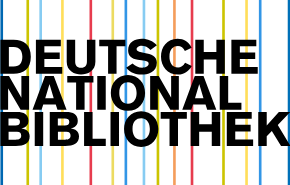IMPROVING ENVIRONMENTAL AUDIT MODELS IN BUSINESS ENTITIES
DOI:
https://doi.org/10.55640/Keywords:
Environmental audit; Green economy; Risk-based auditing; Digital transformation; Water-Scarcity-Adapted Index; Sustainability reporting; ISO 14001; Resource efficiency; Uzbekistan; ESG integration.Abstract
The study focuses on improving environmental audit models in business entities under the conditions of the green economy and digital transformation. The research highlights the need to move beyond the traditional compliance-checking function of environmental auditing toward risk-based, result-oriented, and data-driven approaches. The proposed model integrates technological tools such as ERP, MES, and LIMS systems with the ISO 14001 management cycle (Plan–Do–Check–Act) to create a unified and evidence-based audit framework.
The research methodology combines quantitative analysis, benchmarking, and the development of specific (intensity-based) indicators that link environmental performance with economic efficiency. A special contribution of the study is the Water-Scarcity-Adapted Environmental Compliance Index (WSA-ECI), designed to evaluate ecological performance in regions facing water stress. This index aggregates normalized and weighted indicators—such as water-use efficiency, reuse ratio, treatment effectiveness, and compliance rate—into a single measurable score, enabling comparative assessment across enterprises and regions.
The results demonstrate that the implementation of an improved environmental audit model enhances decision-making, increases resource efficiency, and strengthens environmental accountability. By integrating digital data flows, risk mapping, and real-time monitoring, the model transforms environmental auditing from a formal reporting procedure into a strategic management instrument. The study provides practical recommendations for policymakers, auditors, and industrial enterprises in Uzbekistan and other emerging economies to align environmental auditing with sustainable development goals and ESG standards.
References
1. International Organization for Standardization (ISO). (2015). ISO 14001:2015 – Environmental Management Systems: Requirements with Guidance for Use. Geneva: ISO.
2.Global Reporting Initiative (GRI). (2021). GRI Standards: Sustainability Reporting Guidelines. Amsterdam: GRI Secretariat.
3.United Nations Environment Programme (UNEP). (2022). Green Economy Progress Measurement Framework. Nairobi: UNEP.
4.Organisation for Economic Co-operation and Development (OECD). (2023). Measuring Environmental Performance and Green Growth Indicators. Paris: OECD Publishing.
5.World Bank. (2024). Environmental Auditing and Sustainable Industrial Development: Global Practices and Policy Implications. Washington, DC: The World Bank.
6.European Environment Agency (EEA). (2022). Digitalization and Environmental Governance: Integrating Data Systems into Environmental Audits. Copenhagen: EEA.
7. Makhmudova, N. D. (2025). Integration of Digital Technologies in Environmental and Financial Auditing: Evidence from Uzbekistan. Central Asian Journal of Environmental and Sustainability Studies, 4(1), 71–89.
8.Uzbekistan Ministry of Ecology, Environmental Protection and Climate Change. (2023). Methodological Guidelines on Environmental Audit Implementation. Tashkent: MEEPCC.
9.President of the Republic of Uzbekistan. (2022). Decree No. PF–6313: On Measures to Ensure the Transition to a Green Economy by 2030. Lex.uz Official Legal Portal.
10.International Federation of Accountants (IFAC). (2023). Sustainability Assurance and Extended External Reporting: Implementation Guide for Professional Accountants. New York: IFAC.
11.World Resources Institute (WRI). (2023). Water Scarcity and Corporate Water Stewardship: Measuring and Managing Risk. Washington, DC: WRI.
12.United Nations Economic Commission for Europe (UNECE). (2022). Environmental Performance Review: Uzbekistan (Third Review). Geneva: United Nations.
13.International Accounting Standards Board (IASB). (2023). IFRS S2 – Climate-Related Disclosures. London: IFRS Foundation.
Downloads
Published
Issue
Section
License

This work is licensed under a Creative Commons Attribution 4.0 International License.
Authors retain the copyright of their manuscripts, and all Open Access articles are disseminated under the terms of the Creative Commons Attribution License 4.0 (CC-BY), which licenses unrestricted use, distribution, and reproduction in any medium, provided that the original work is appropriately cited. The use of general descriptive names, trade names, trademarks, and so forth in this publication, even if not specifically identified, does not imply that these names are not protected by the relevant laws and regulations.







